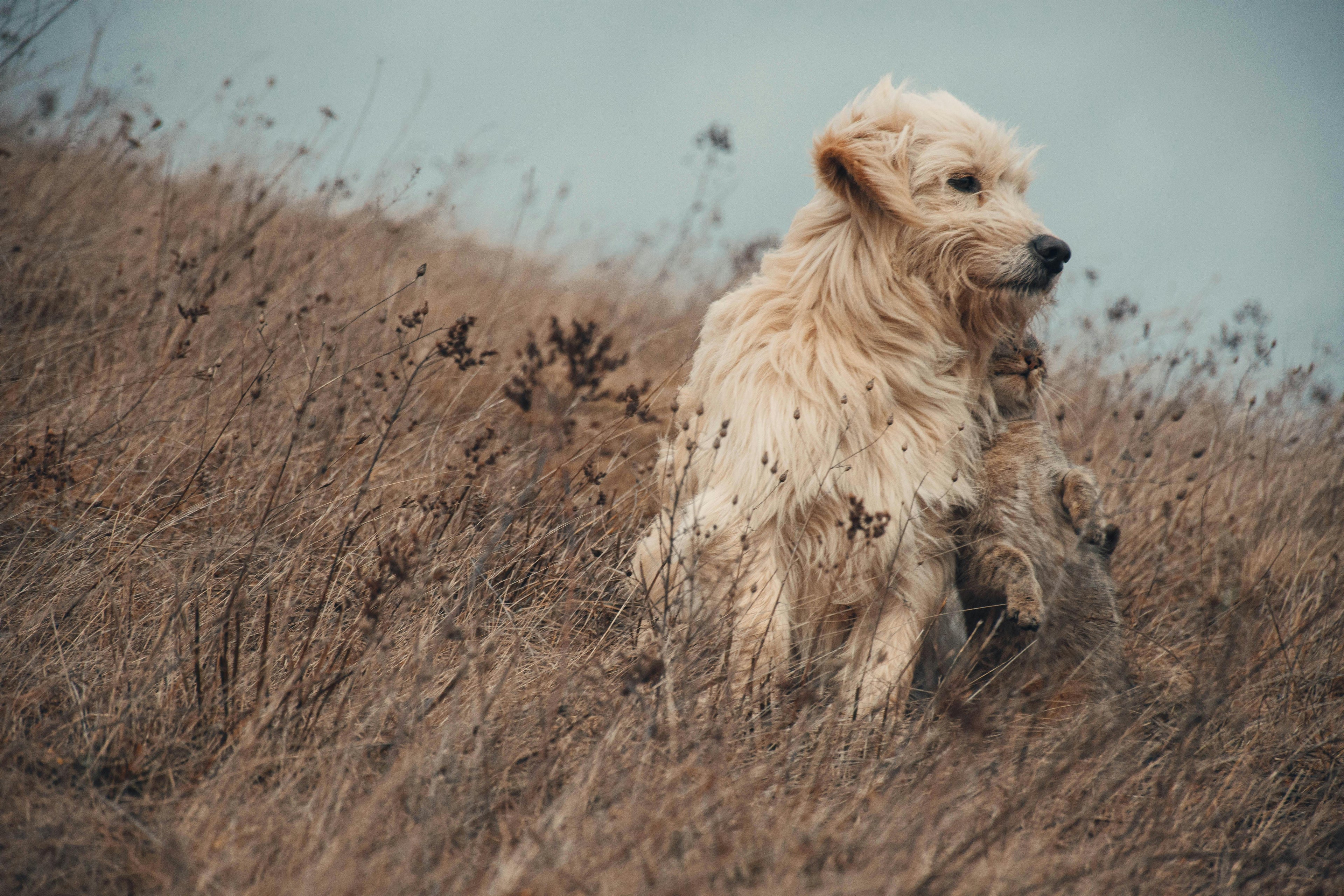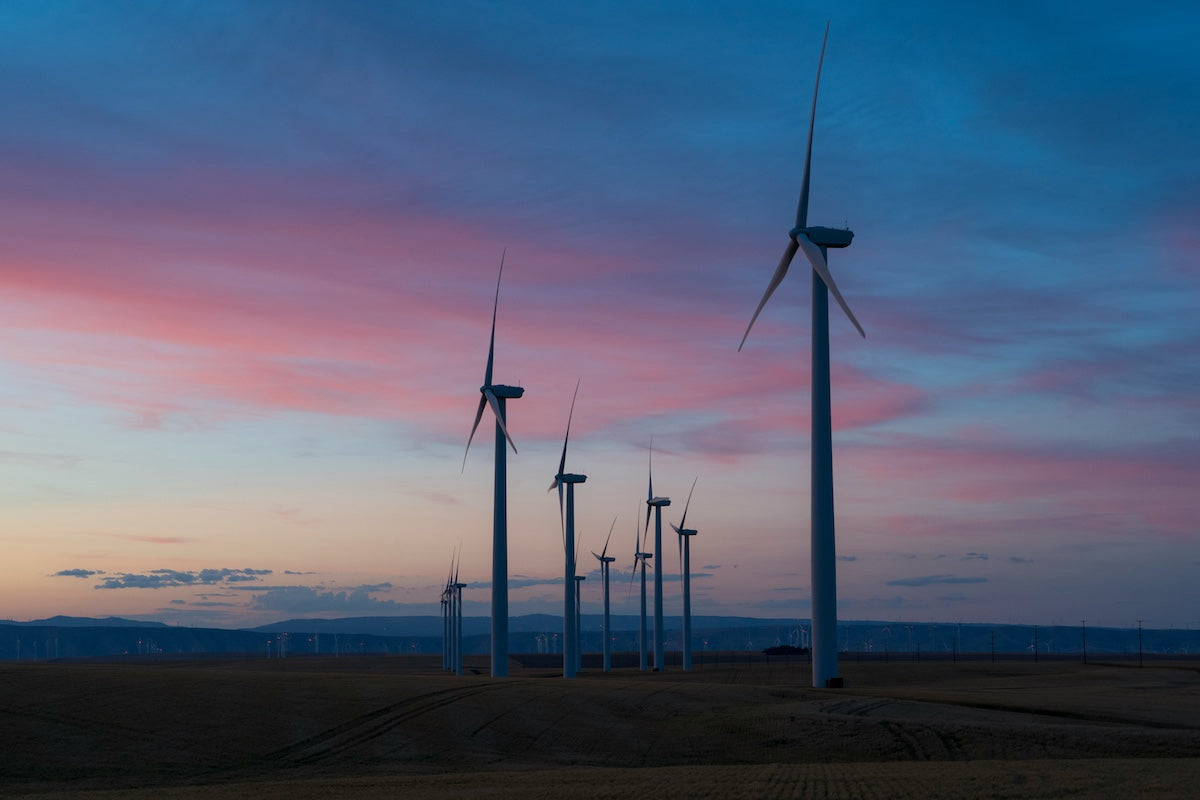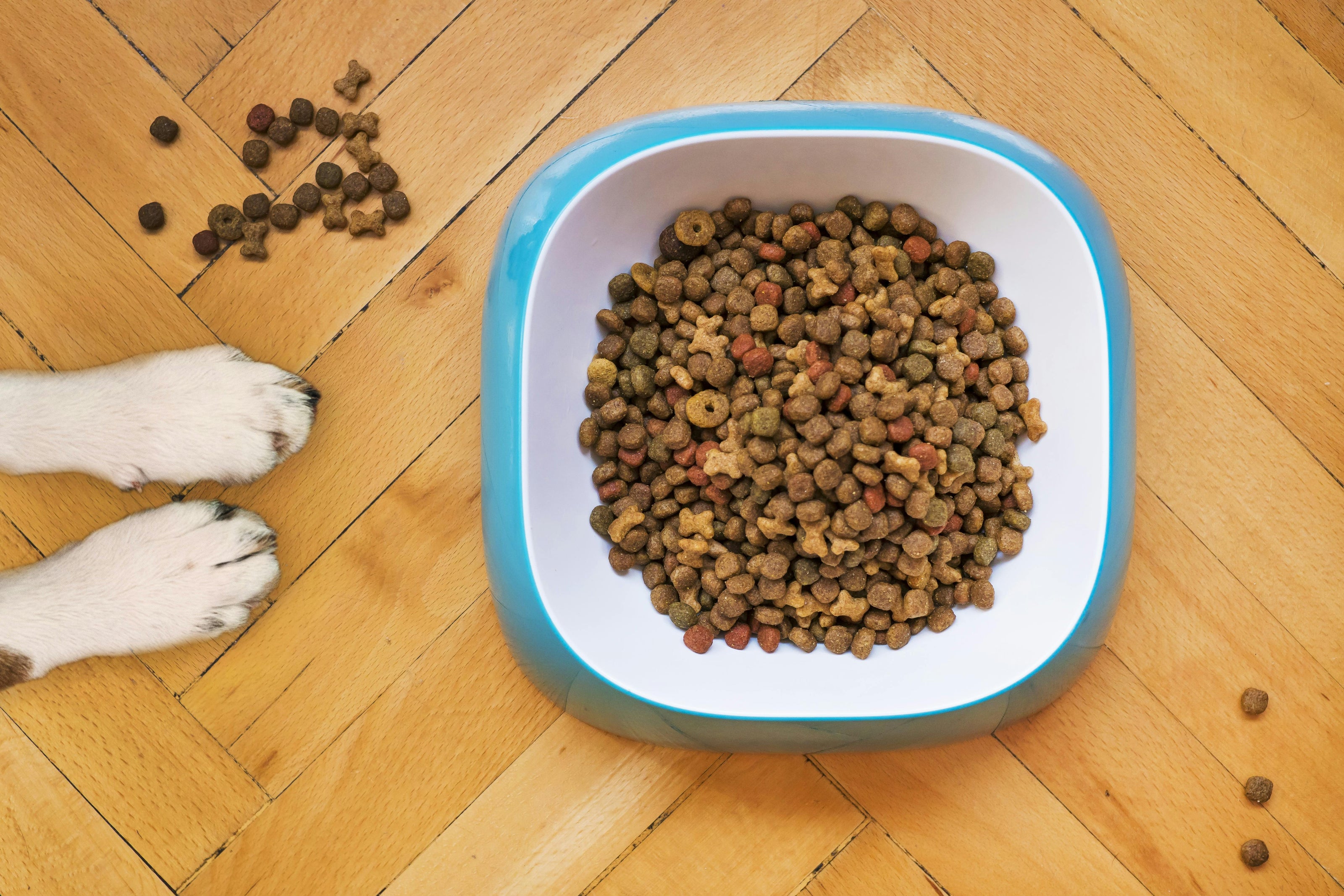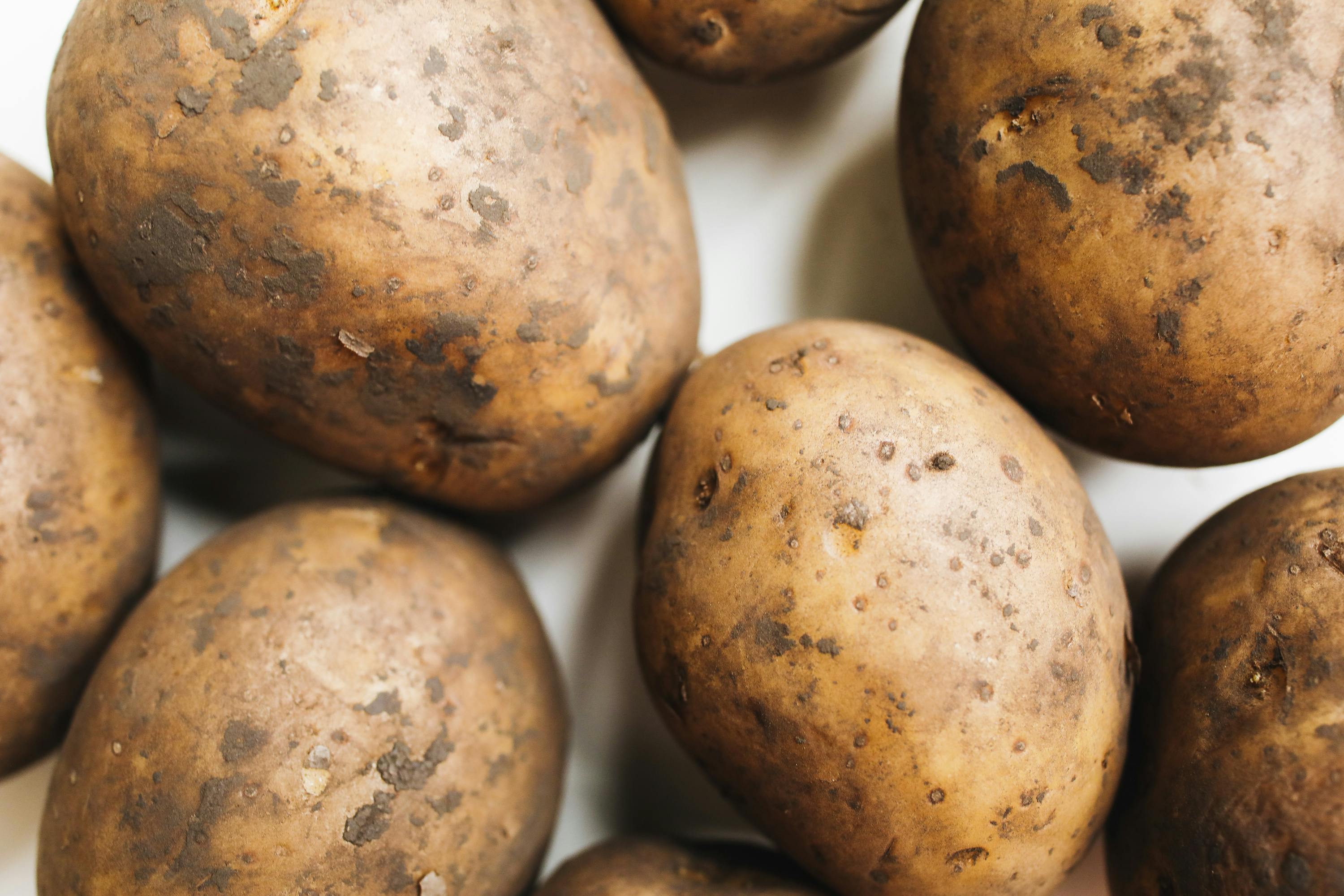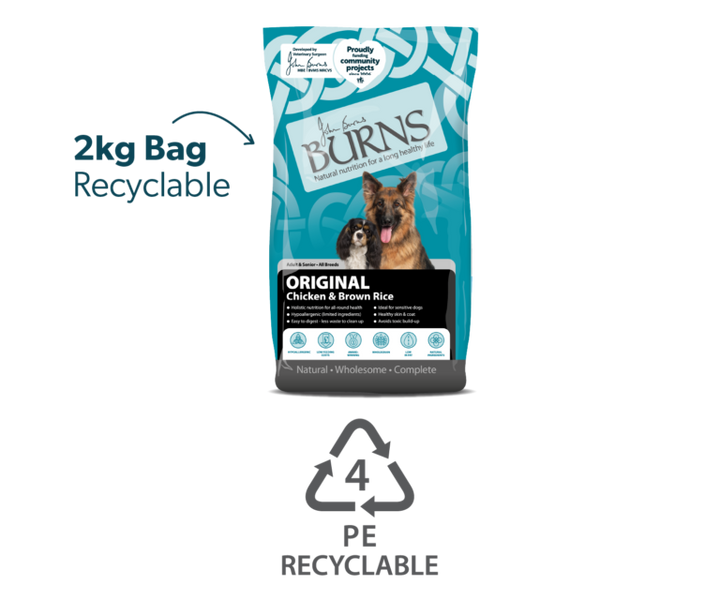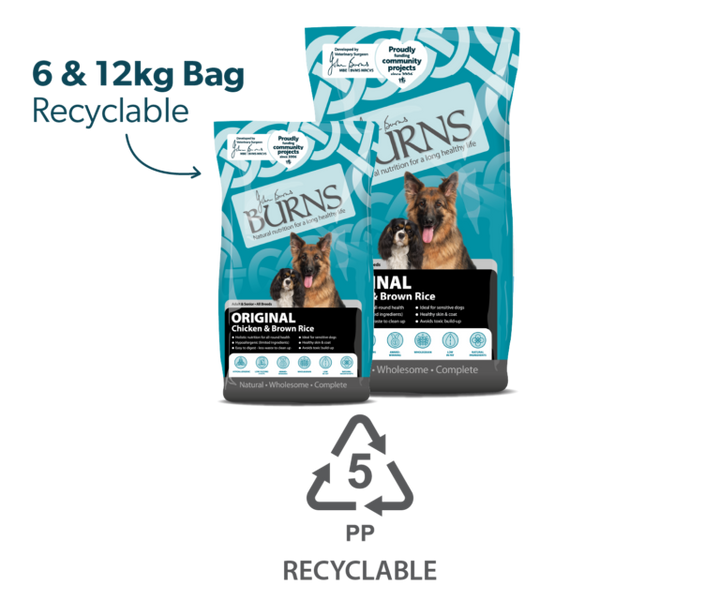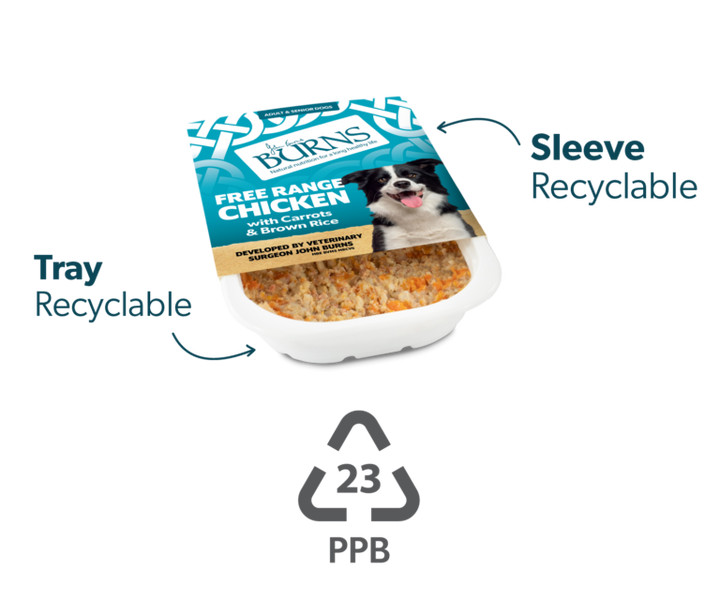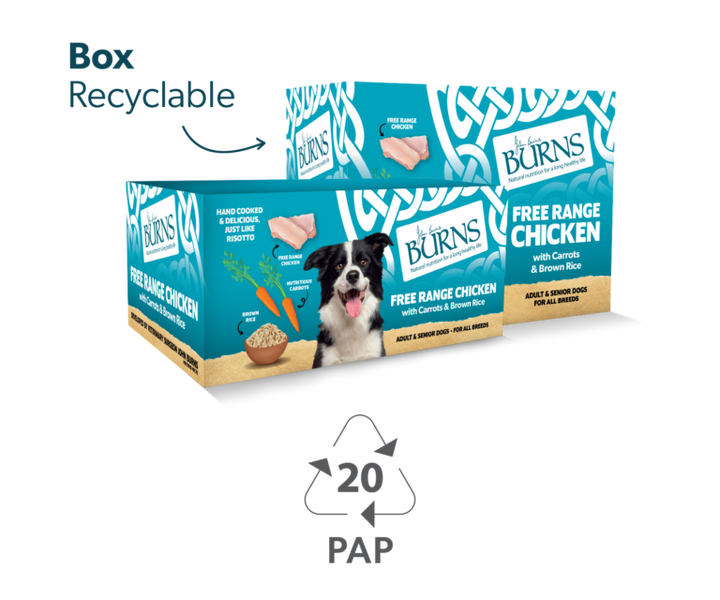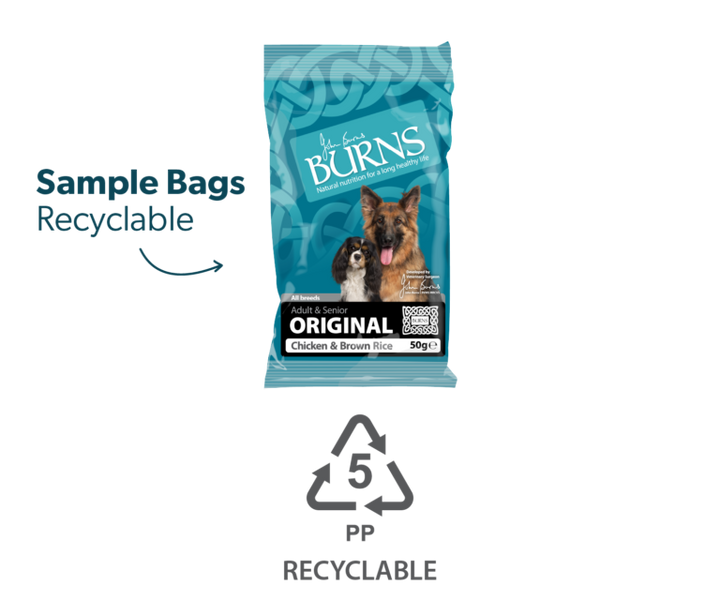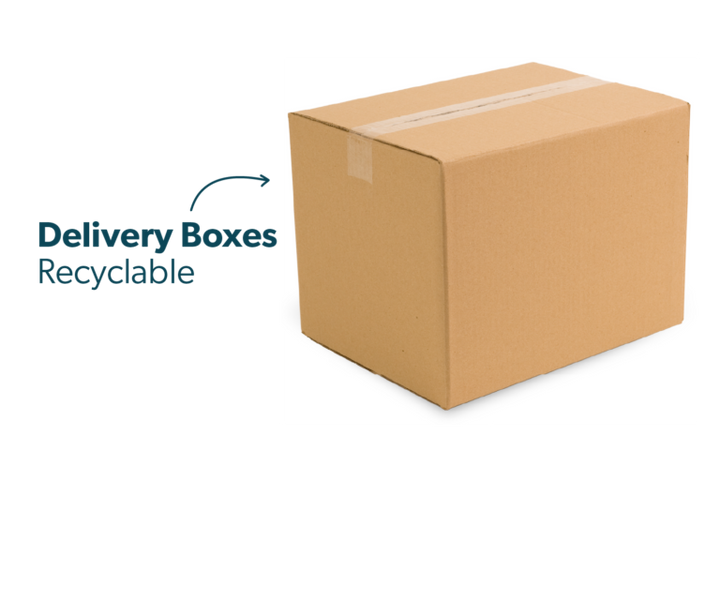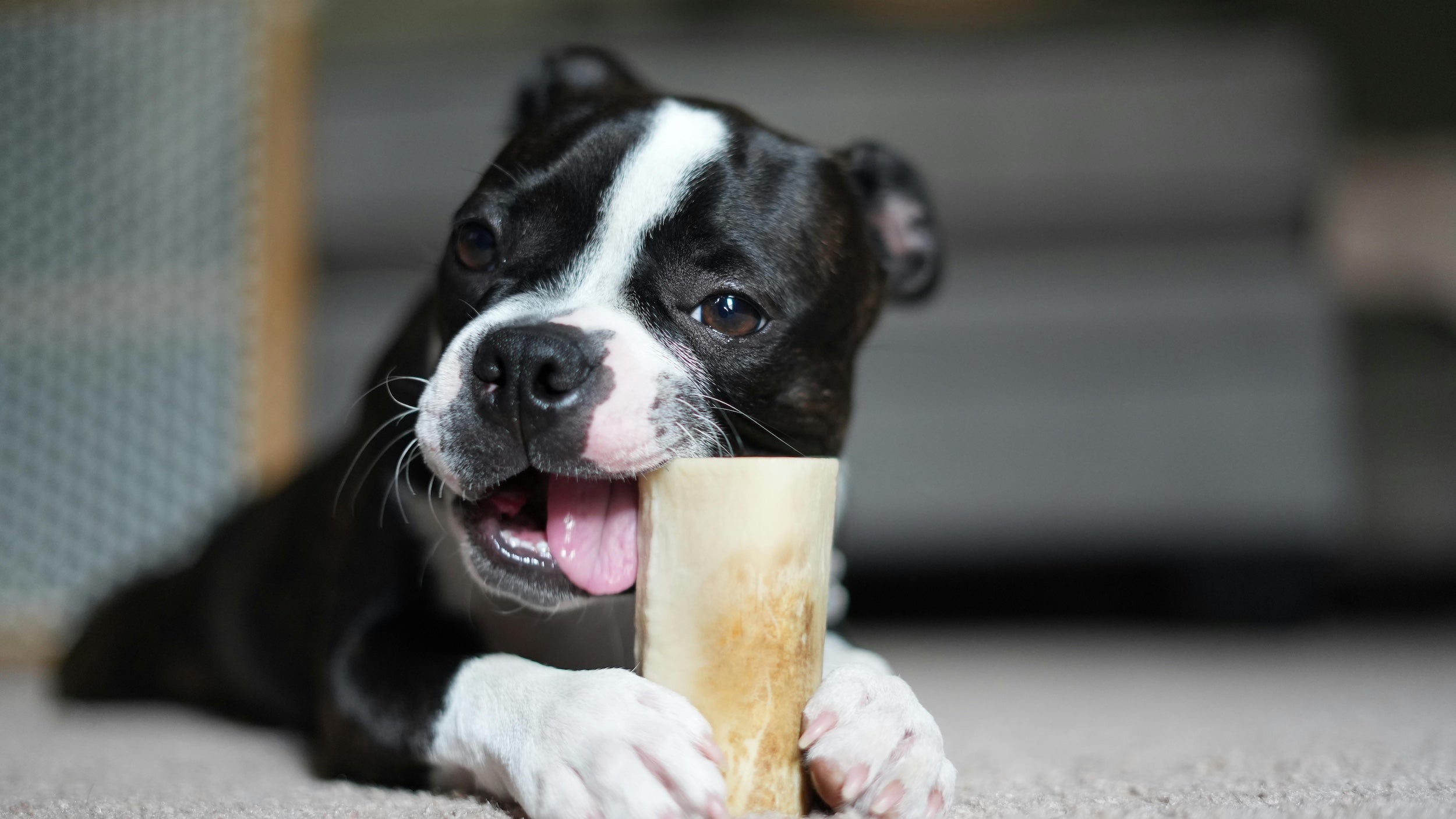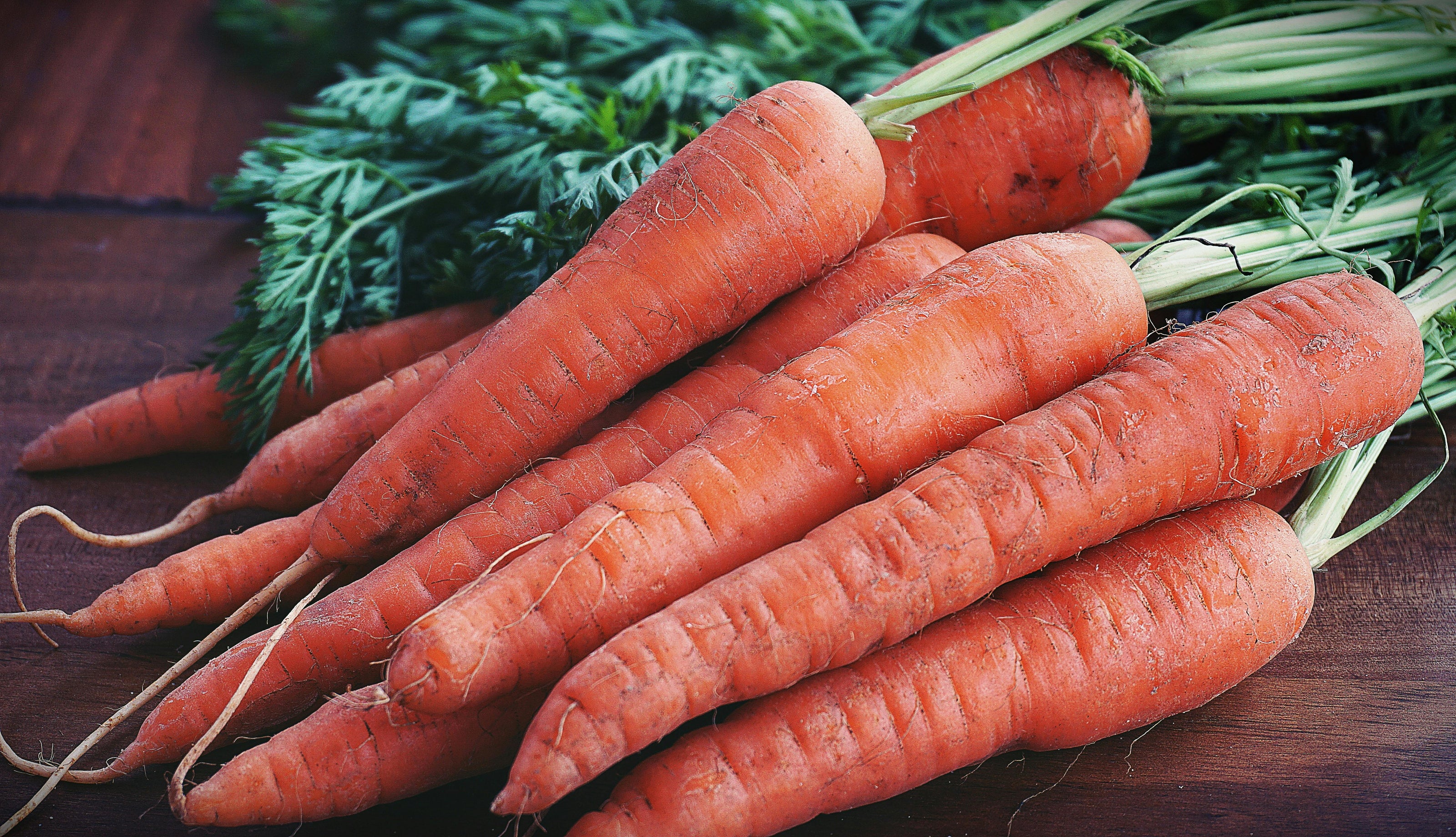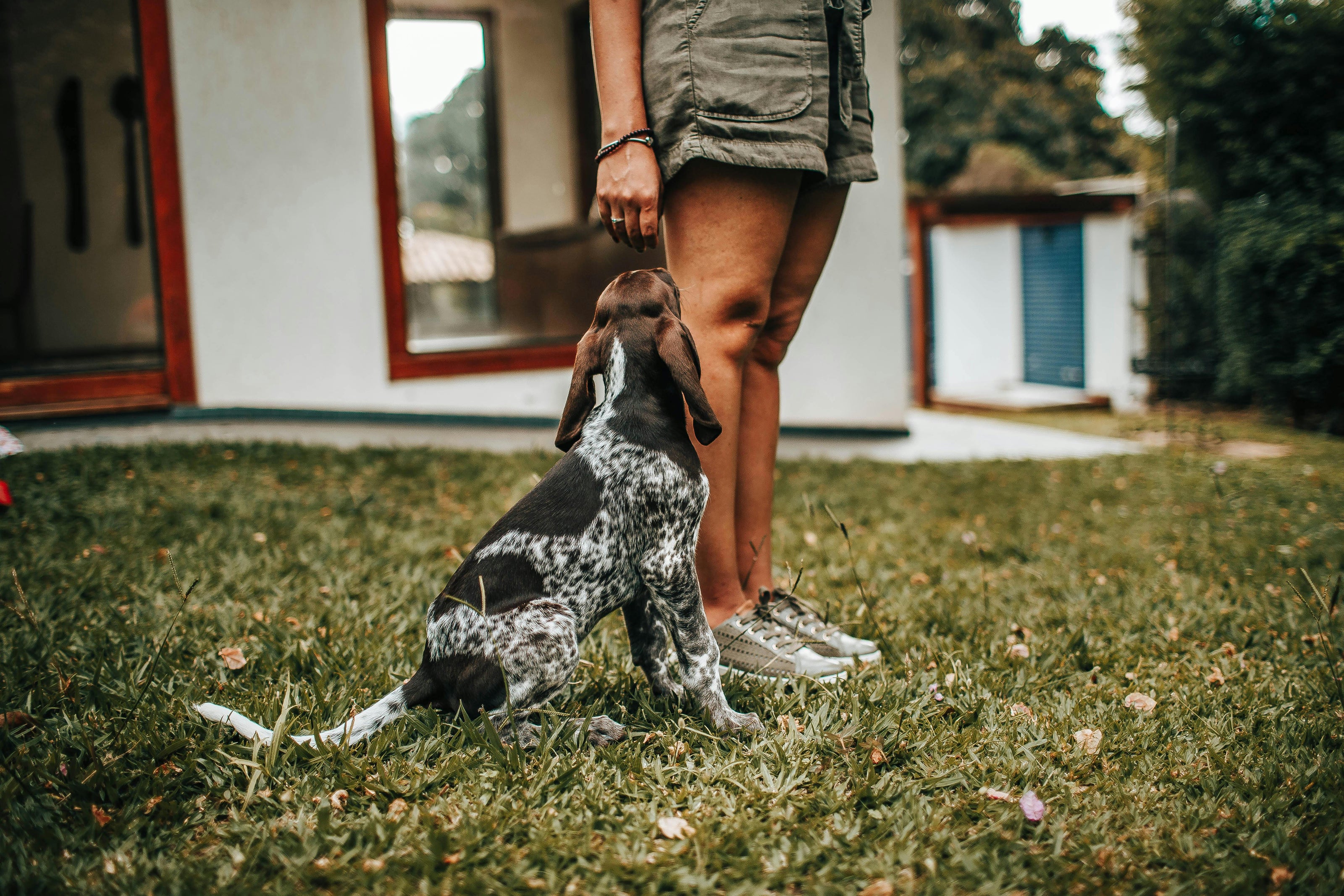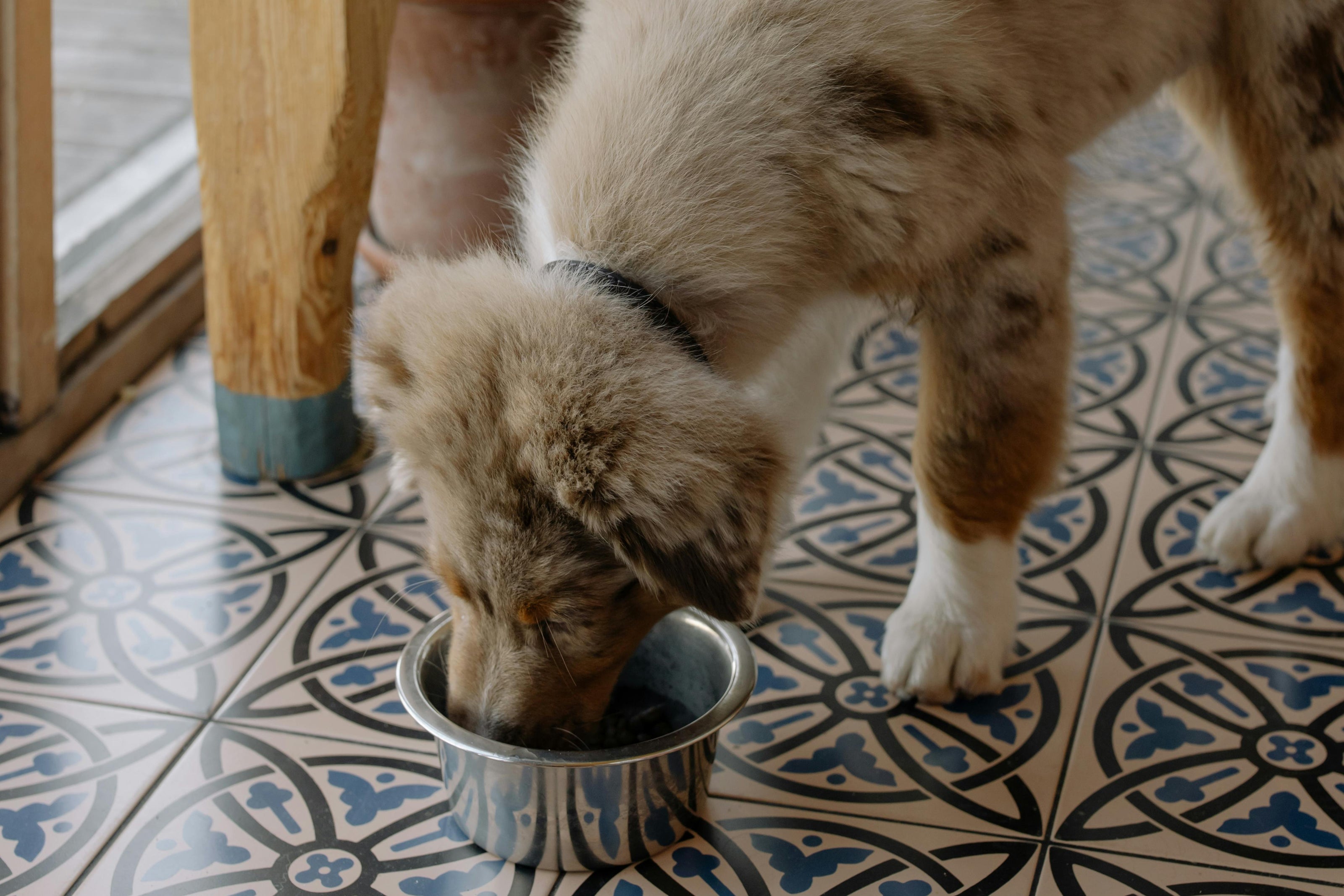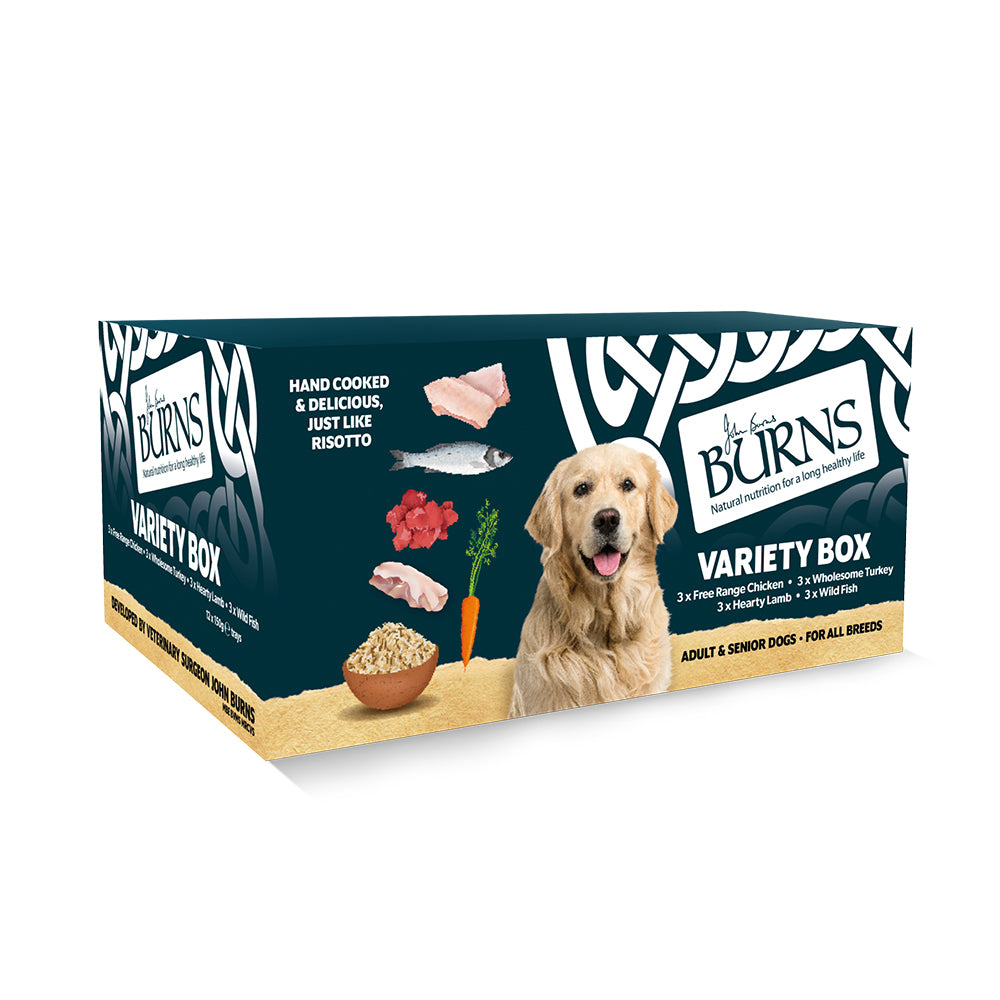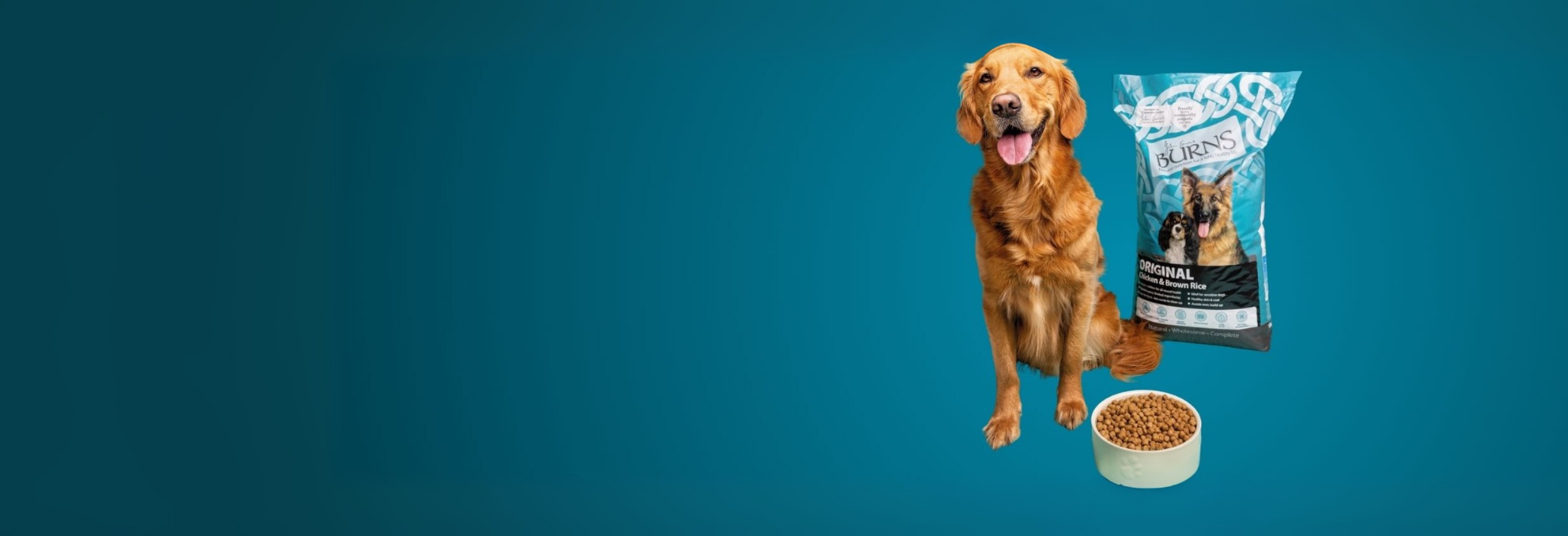At Burns, we take our environmental responsibilities very seriously.
We’re always looking to reduce our carbon pawprint wherever we can to change the pet food industry for the better. Here are some of the ways we’re keeping on top of our sustainability mission at Burns.
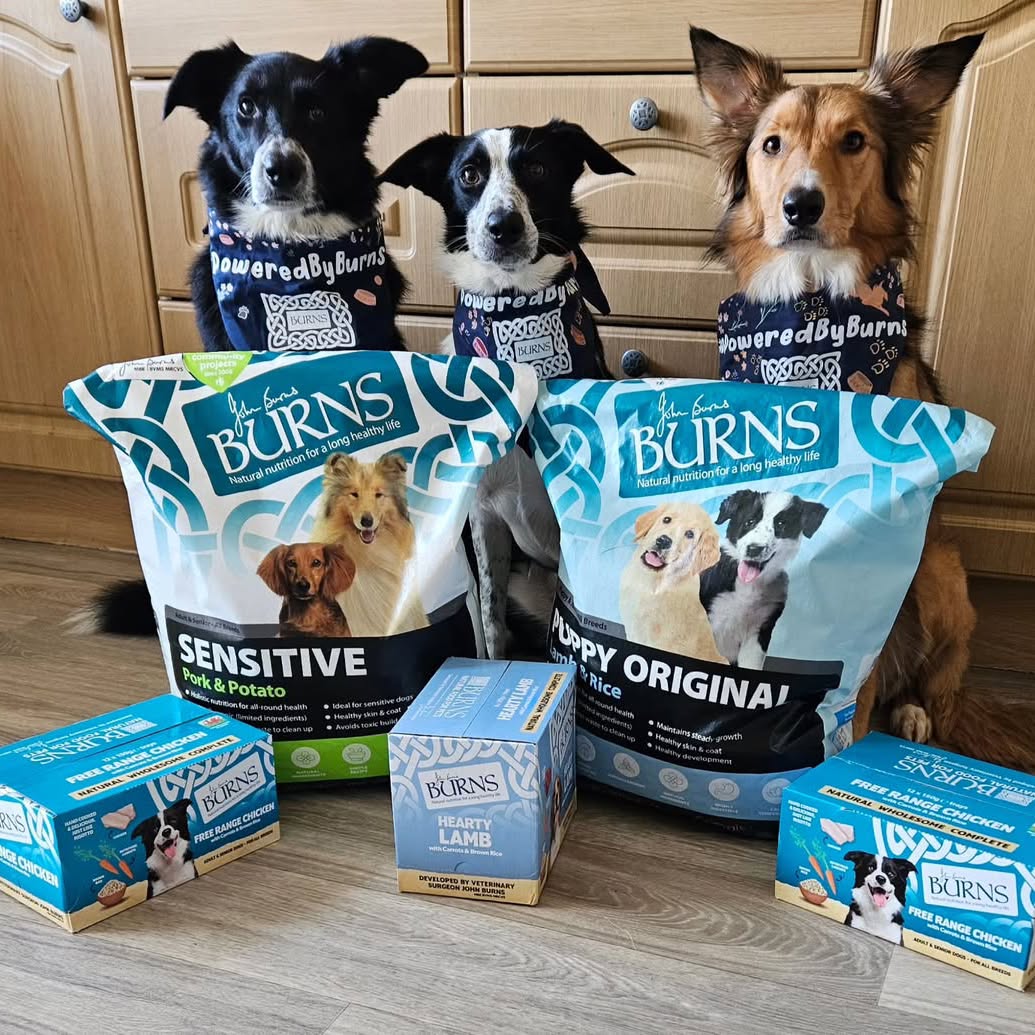
Recyclable Packaging
Several years back, we made a pivotal shift towards using 100% recyclable packaging for our dry food and treats. Recognising the profound impact even minor adjustments in everyday products can have on the environment, we’ve taken proactive steps to ensure our packaging is eco-friendly. While the packaging for Burns Wet Food comprises a recyclable plastic tray, a paper sleeve, and a cardboard box, we are actively exploring options to make the film lid recyclable as well. Keep scrolling for more information about how to recycle our packaging.
Packaging Guide
Wet Food: Please note that the plastic film is non-recyclable and can go into general waste.

